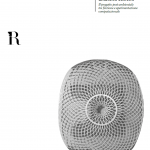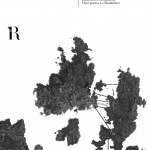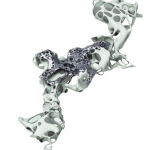


Thesis on Architectural Design – Prof. Arch Giuseppe Ridolfi PhD –
School of Architecture – Università degli Studi di Firenze
Submission
To submit thesis proposal students have to contact the supervisor via e-mail or in person in order to discuss and to decide arguments and programs of development.
Pay attention: to guarantee a satisfactory level of quality no thesis beyond the number of fifteen will be supervised.
Thesis Review
Thesis reviews are carried out by prior online appointment to be booked on the dedicated page at this LINK.
News & Updates will be communicated on the Splash Page at this LINK
Requirements
Before starting a thesis request, students are invited to be aware of the professor’s disciplinary areas and design philosophy. For this purpose, it is strongly recommended to read the texts in the following list in order to tune up with the cultural and methodological design approach.
Topics & Contents
Although all students are eligible, the specificity of the topics requires some knowledge and skills or motivated interests in learning them. As a guideline, the following areas and / or themes are noted:
- Environmental Computational Design
- Performance Simulation Based Design
- Generative Design
- Adaptive Architectures Conceptual Prototypes
- Experimental Systems and Components for Architectural Envelope
- Performative BIM in the Early Stage Design
- Passive Design & Low Technologies
- Community Food Markets
- Architectures in Extreme Environments
- Fictional storytelling for architectural metaphors
- Poetical Places and Architectures to reconnect the world
- Speculative Structuralism investigating grids and architectural grammar
- Multimediascape Installation
RECOMMENDED READINGS
Giuseppe Ridolfi, Architetture in Ambienti Estremi. Il progetto post-ambientale tra finzione e sperimentazione computazionale, DIDAPress, Firenze, 2020
Giuseppe Ridolfi, Traumnovelle, Isolation and Reconnection. Ten Bridges at La Maddalena, DIDAPress, Firenze, 2020
Giuseppe Ridolfi, Arman Saberi, Computational Intelligences in the Post-Environmental Design, in Agathón. International Journal of Architecture, Art and Design, n. 05, Demetra Ce.Ri.Med, Palermo, 2019
THESIS DELIVERABLS
The thesis deliverables are made up of graphical drawings, scale models, videos, booklets.
Drawings must be printed out in a number of boards sufficient to provide a clear and complete understanding of the project including Project Concept and Mission; Place Assessment and Design Strategies based on Climate Report; Alternatives Evaluations and Schematic Design; Functional and Architectonical Project Representations,Envelope or other Technological System Details, Outdoors and Indoors Renders.
Drawings formats can be chosen from the following:
- Uni A0 (841 x 1189 mm)
- Uni A1 (594 x 841mm).
- Continuous prints on a single sheet with a maximum height of 841 mm and length at will)
- Special formats for specific project proposals to be agreed with the supervisor.
The use of mixed formats is not recommended.
Scale Models
The realization of descriptive models, representing architectural morphology and volumes are optional and not strictly required.
Conversely, models of technological subsystems (e.g. parts of the envelope) that illustrate the logic of assembly and its component parts should be privileged.
For those interested, assistance can be provided for the creation of interactive dynamic models with the use of sensors, microcontrollers, or other multimedia devices for interaction.
Videos
As an alternative to the scale models, it is possible to use videos with the digital animation technique to be projected on the screen or with immersive devices.For particular projects it is also possible to have assistance for interactive videos and / or videomapping on physical models. The contents of the videos must include visualizations of the architecture inserted in the context and of the interior spaces.
For video formats and quality here are some indications:
Dimensions:
- HD (1920×1080) minimum standard accepted
- UHD or 4k (3840 x 2160)
Bit Depth:
- 24 recommended
- 16
Codecs:
- Mpeg4 (generic)
- H264 (preferable)
- H265 (preferable but not essential for 4K video)
- ProRes 422 (possibly for high quality master)
Containers:
- .mov
- .avi
- .mkv
Frames per seconds (Fps):
- 60 for Htv
- 30 for Tv
- 24 for Cinema
Bit rate (guideline values to be verified with the indications given by the various social platforms):
- no limitations and maximum quality for video projections and masters
- 5, 6, 7.5 Mbps for 720p web video at 24, 30, 60 Fp
- 8,10,12 Mbps for 1080p web video at 24, 30, 60 Fps
- 35,45,68 Mbps for 2160p web video at 24, 30, 60 Fps
Audio:
- 44,1kHz
- 48 kHz
Booklet
The booklet must be supplemented by iconographic compendia specially produced or extracted from the graphic tables. In the appendix it is possible to include the graphic boards in the reduced scale.
The volume must be supplemented by the bibliography. For the methods of organizing bibliography, notes and citations, see the following link.
Adobe Indesign Master Format and editorial rules for Booklet editing <Download>
Different format is also possible non exceeding the Uni A4 dimension




